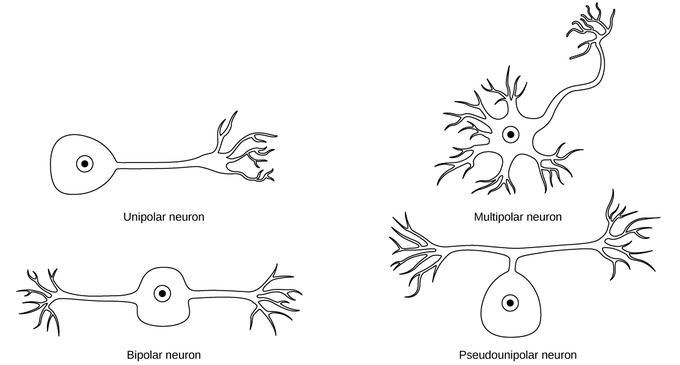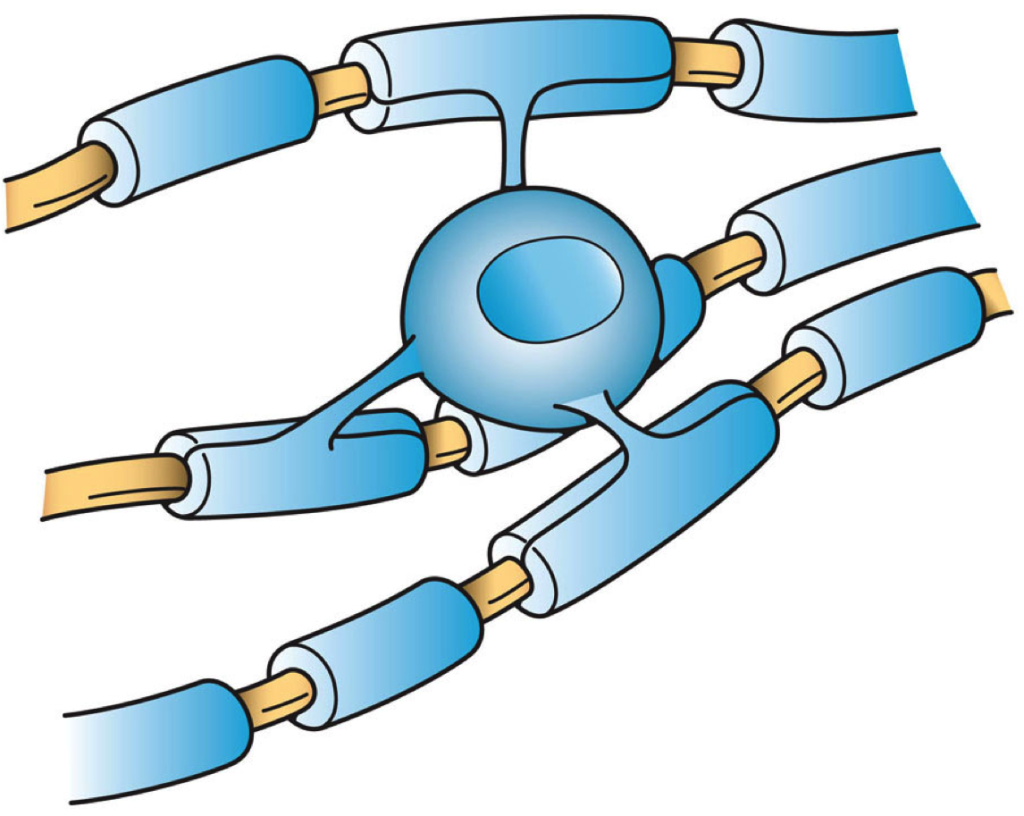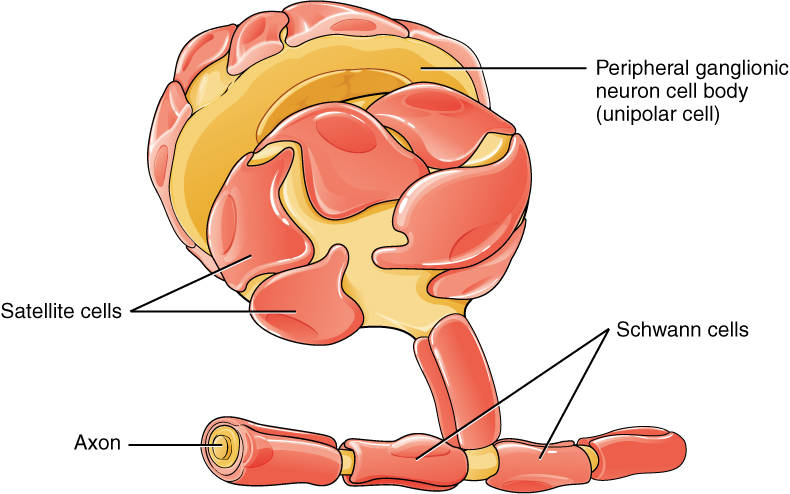3.3: Types of Cells in the Brain
Not all neurons are created equal. Sensory neurons help us receive information about the world around us. Motor neurons allow us to initiate movement and behavior, ultimately allowing us to interact with the world around us. Interneurons process sensory input from our environment into meaningful representations, plan behavioral responses, and connect to the motor neurons to execute these behavioral plans.
The main categories of neurons are defined by their specific structure. The structures support their unique functions. Unipolar neurons are structured in a way that is ideal for relaying information forward, so they have one neurite (axon) and no dendrites (Figure 4). They are involved in transmission of physiological information from the body’s periphery such as communicating body temperature through the spinal cord up to the brain. Bipolar neurons are involved in sensory processing such as sensing light in the eye’s retina. They have one axon and one dendrite which help acquire and pass sensory information to various regions in the brain. Finally, multipolar neurons are most common and communicate sensory and motor information in the brain. Multipolar neurons have one axon and many dendrites which allows them to communicate with other neurons. One of the most prominent neurons is a pyramidal neuron, which falls under the multipolar category. It gets its name from the triangular or pyramidal shape of its soma (for examples see, Furtak et al., 2007).

In addition to neurons, non-neuronal cells in the nervous system called glia or neuroglia provide support and play essential roles in the functioning of neurons. Glial cells have several functions, just a few of which we will discuss here. One type of glial cell, called oligodendroglia, forms the myelin sheaths that insulate axons (Simons & Trotter, 2007; see Figures 5). In the central nervous system (CNS), oligodendroglia wrap their dendritic processes around the axons of neurons many times to form the myelin sheath. One cell will form the myelin sheath on several axons. In the peripheral nervous system (PNS), Schwann cells, another type of glial cell, form the myelin sheath for neurons. One cell will wrap around a singular axon in the PNS. Other types of glial cells, such as microglia and astrocytes, digest debris of dead neurons, carry nutritional support from blood vessels to neuron, and help to regulate the ionic composition of the extracellular fluid. Glial cells are essential for neuronal support, but unlike neurons, they do not conduct electrical signals or engage in cell-to-cell communication.


Media Attributions
- types of neurons © Libre Texts Biology is licensed under a CC BY-SA (Attribution ShareAlike) license
- Oligodendrocyte © Wikimedia is licensed under a CC BY-SA (Attribution ShareAlike) license
- Glial Cells of the PNS © Wikimedia is licensed under a CC BY-SA (Attribution ShareAlike) license
Non-neuronal cells in the nervous system that play a wide range of supporting roles in the nervous system.

